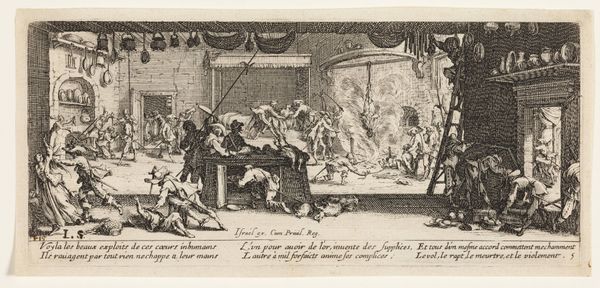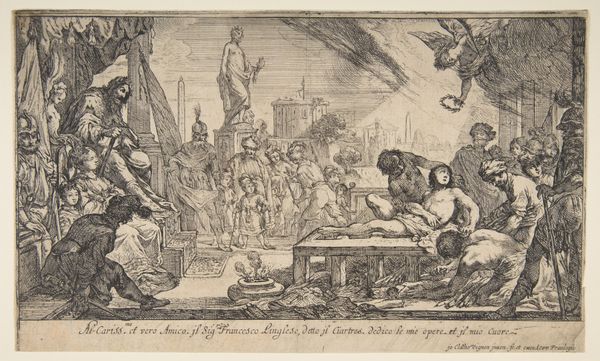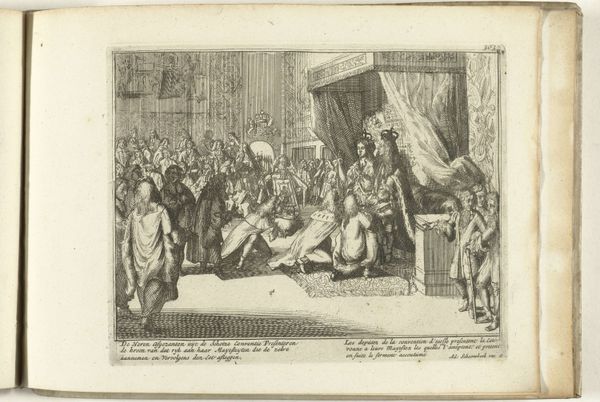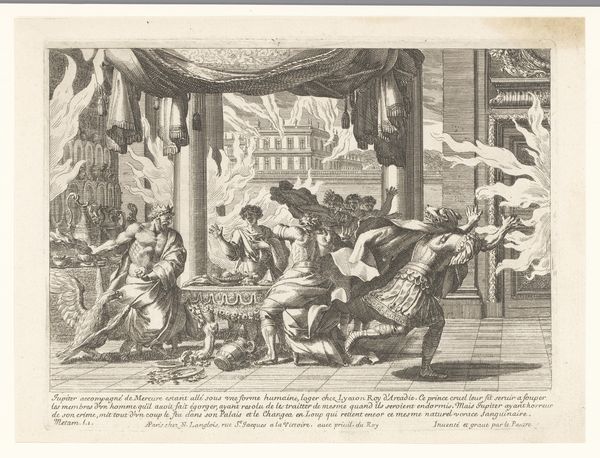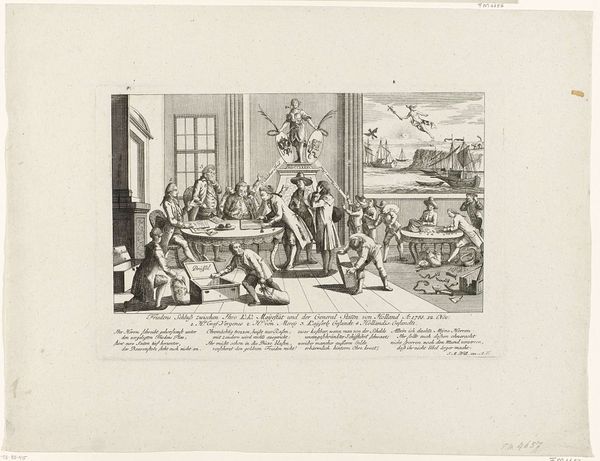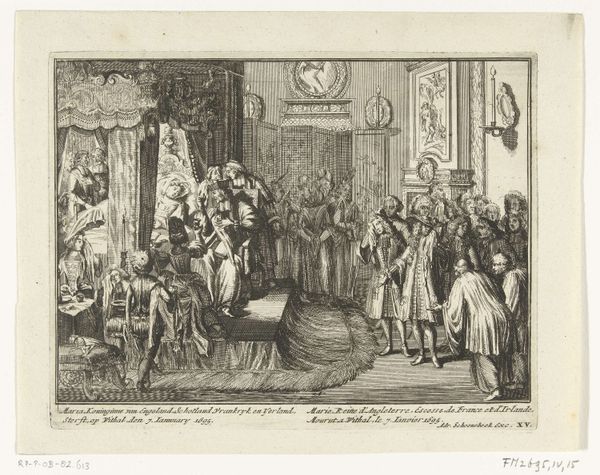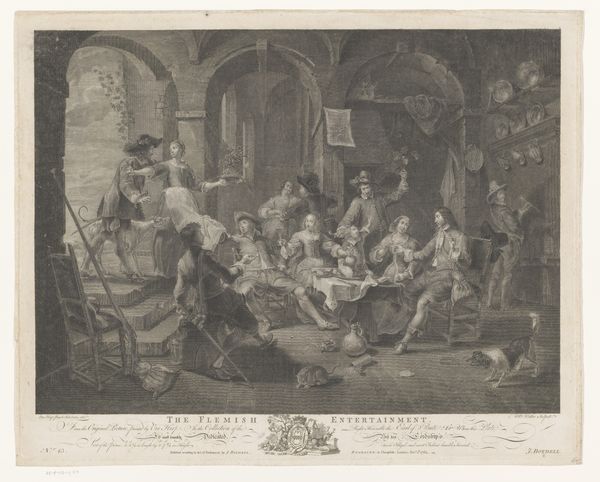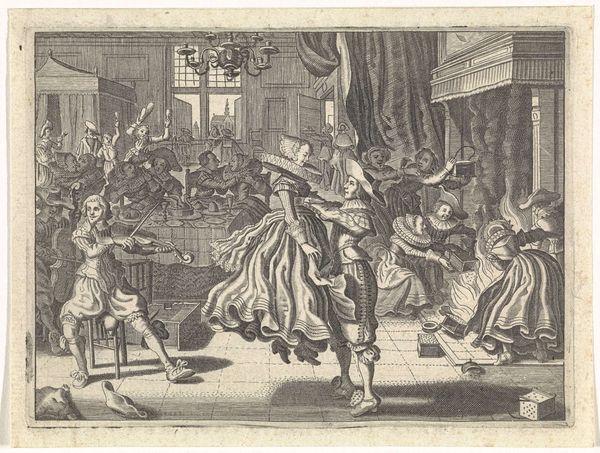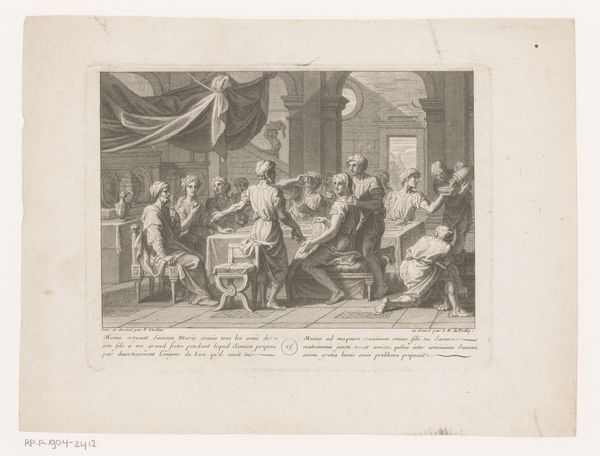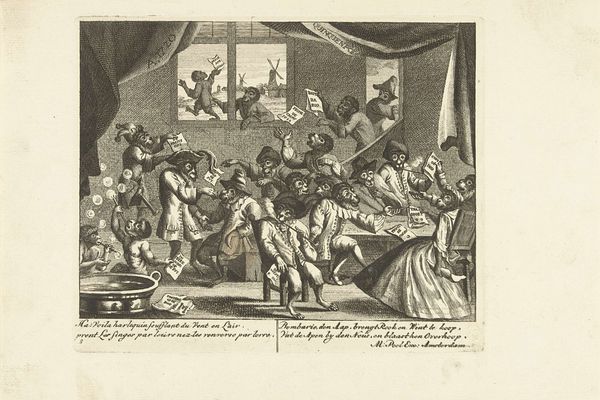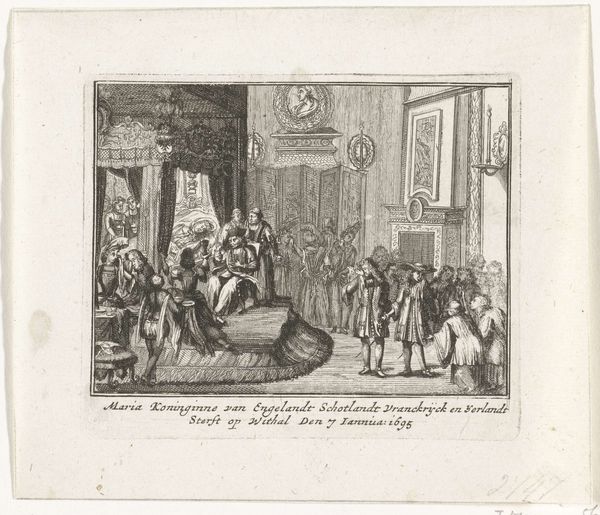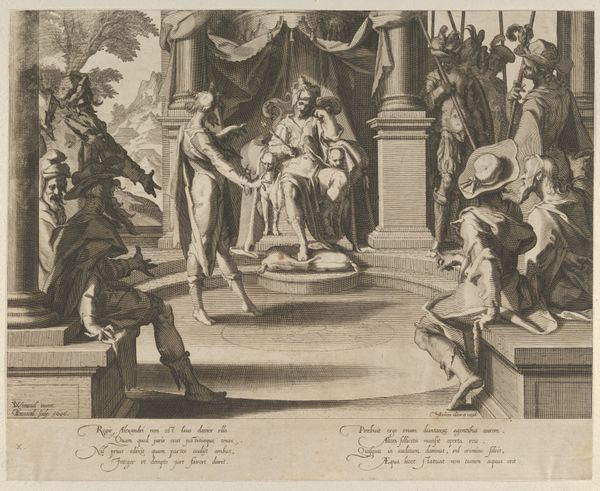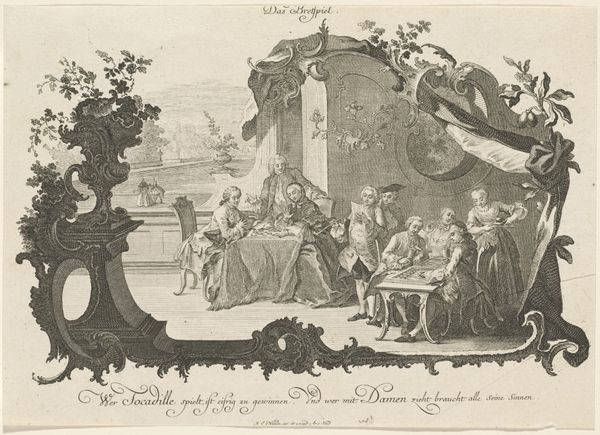
Plundering a Large Farmhouse, plate five from The Large Miseries of War n.d.
0:00
0:00
drawing, print, etching, engraving
#
drawing
#
baroque
# print
#
etching
#
genre-painting
#
history-painting
#
engraving
Dimensions: 74 × 179 mm (image); 86 × 183 mm (plate); 99 × 197 mm (sheet)
Copyright: Public Domain
Curator: This is plate five from “The Large Miseries of War,” an etching by Gerrit Lucasz van Schagen. Though undated, the artwork is part of a series reflecting the tumultuous period of the Baroque era. Editor: What strikes me first is the sheer frenzy captured in this densely worked image. It’s almost unbearable to look at—such an abundance of violence. I want to ask, what kind of labor went into producing a print with so many details of suffering? Curator: Precisely. It acts as a visual document, preserving a collective memory of conflict. Look at how the chaos is rendered: the overturned tables, the bodies strewn about. The artist skillfully utilizes these symbolic representations to convey a powerful message about the disintegration of society in a time of war. Editor: You’re right about the overturned tables. It makes me think about the literal work of domestic labor, shattered, and violated. All the tools of labor scattered, repurposed as weapons. See how the light is created by that burning structure in the background that would likely house essential supplies or other material wealth. Curator: Yes, that's a critical aspect. Fire has always had a symbolic meaning related to purification, but in the context of war it stands for obliteration. Note also how it accentuates the overall composition, acting almost as the main subject to draw our eyes toward the carnage and destruction. The fire seems to embody all the destructive energy erupting in the foreground. Editor: The choice of etching is quite interesting here. A more refined technique would sanitize the subject matter too much. The relative speed with which an etching can be produced may mean the artist had to complete this artwork under extreme constraints. The roughness speaks to its sociohistorical context. Curator: Well, reflecting on this powerful etching, it serves not just as a historical depiction, but also as a somber reminder of the recurrent nature of conflict in our human story. Editor: Indeed, the materials of art-making and the means of their employment are powerful indicators of artistic intent and cultural memory.
Comments
No comments
Be the first to comment and join the conversation on the ultimate creative platform.
